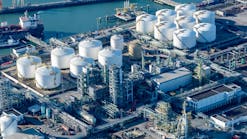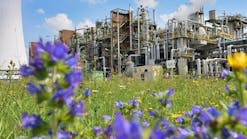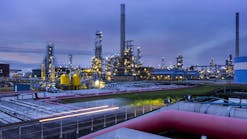HPCL, Rajasthan let contract for Barmer integrated complex
HPCL Rajasthan Refinery Ltd. (HRRL), a 74-26% joint venture of Hindustan Petroleum Corp. Ltd. (HPCL) and the state government of Rajasthan, has let a contract to McDermott International Inc. to provide technology for new units at the JV’s proposed 181,000-b/d integrated refinery and petrochemical complex now under construction at Pachpadra Tehsil, Barmer District, Rajasthan (OGJ Online, Jan. 10, 2018).
As part of the contract, McDermott will deliver license and basic engineering design of two 420,000-tonne/year polypropylene units that will use Lummus’ proprietary Novolen process reactors and proprietary NHP catalyst to produce a full range of polypropylene products for the Indian and regional markets, the service provider said.
The combined units, once completed, will form the largest polypropylene plant in India.
McDermott, which valued the contract at $1-50 million, said the award was reflected in its third-quarter 2018 backlog.
A specific timeframe for completion of work on the two units was not disclosed.
Integrated project overview
Once completed, the refinery—which will take about 4 years to build—will be equipped to produce Bharat Stage 6-grade fuels (equivalent to Euro 6-quality) from a feedstock of both locally produced and Saudi Arabian crudes to meet increased demand for petroleum products in Rajasthan as well as other northern Indian states.
During its first 8 years of operation, the refinery will be designed to process 1.5 million tpy of Rajasthan crude from nearby Mangla fields and 7.5 million tpy of imported Arab Mix crude—consisting of Arab Light and Arab Heavy grades—before switching to a full 9 million-tpy feedstock slate of Arab Mix beginning in its ninth year of operation, according to documents filed with India’s Ministry of Environment, Forest, and Climate Change (MOEFCC).
According to Engineers India Ltd.’s revised environmental impact assessment for the Barmer project filed with MOEFCC in July 2017, the complex will include the following nameplate processing capacities:
• Crude distillation, 181,000 b/d.
• Vacuum distillation, 96,400 b/d.
• Naphtha hydrotreating, 36,100 b/d.
• Isomerization, 5,200 b/d.
• Continuous catalyst regeneration reforming, 6,000 b/d.
• Diesel hydrotreating, 82,300 b/d.
• Fluid catalytic cracking, 58,200 b/d.
• Delayed coking, 48,200 b/d.
• Polypropylene (two units), 490,000 tpy each
• Butene-1, 59,000 tpy.
• Linear low-density/high-density polyethylene (two swing units), 416,000 tpy each.
• Vacuum gas oil hydrotreating, 70,300 tpy.
• Dual-feed steam cracking, 820,000 tpy.
• Low-pressure ethylene recovery, 77,000 tpy.
• Benzene recovery, 96,000 tpy.
• Pyrolysis gasoline hydrotreating, 11,000 b/d.
• BTX fractionation, 11,000 b/d.
• FCC gasoline depantanizing, 17,500 b/d.
• Gasoline hydrotreating, 10,600 b/d.
• FCC C5 Merox, 4,400 b/d.
• Saturated LPG Merox, 3,300 b/d.
• LPG depropanizing, 3,300 b/d.
• Fuel gas treating, 1,425 tonnes/day.
• Hydrogen generation, 37,000 tpy
• Pressure-swing adsorption, 28,000 tpy.
• Sour-water stripping (hydroprocessing), 100 cu m/hr.
• Sour-water stripping (nonhydroprocessing), 250 cu m/hr.
• Amine regeneration (three units), 480 cu m/hr each.
• Sulfur recovery with tail-gas treatment (two units), 199 tonnes/day each.
Contact Robert Brelsford at [email protected].


